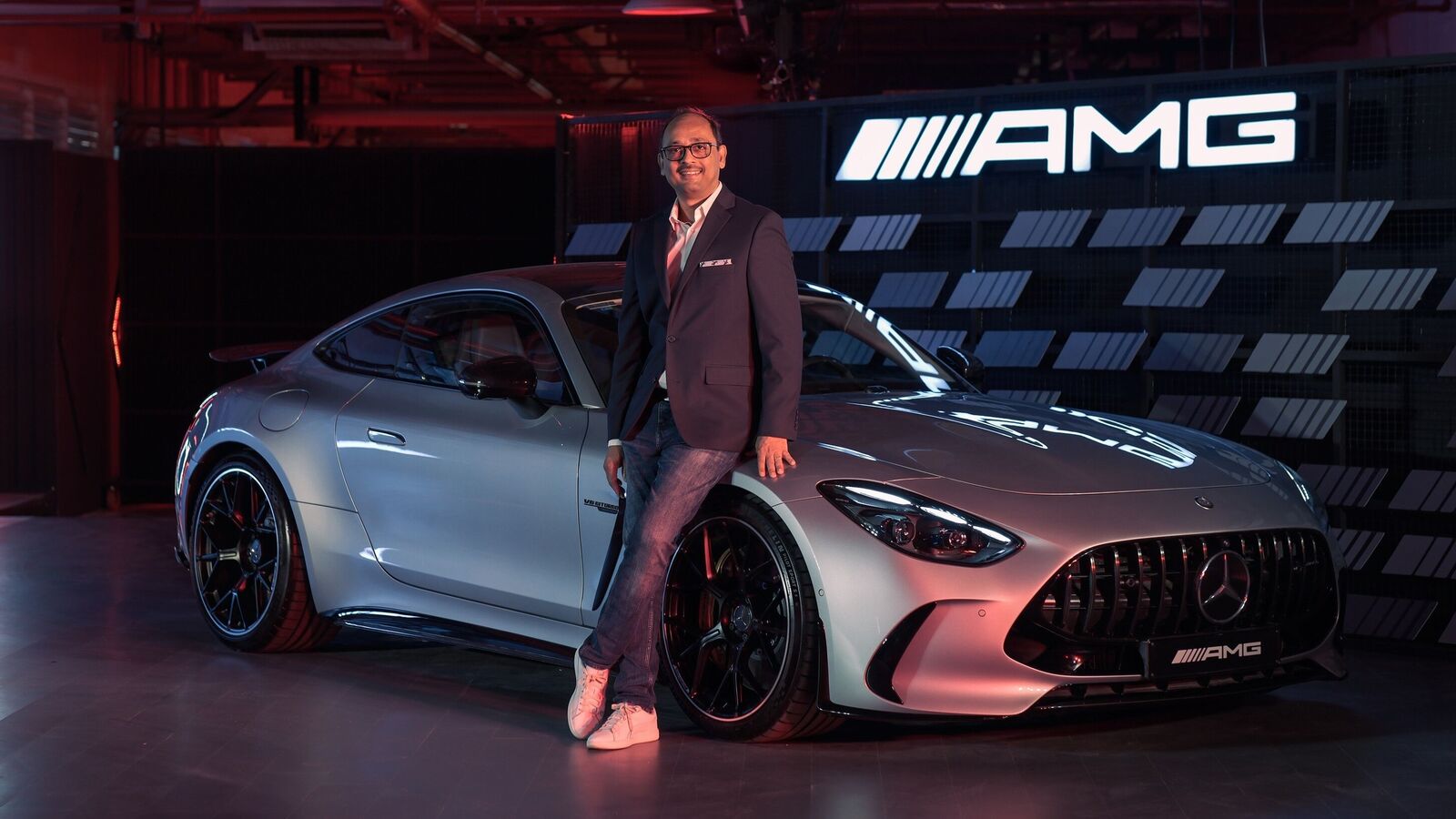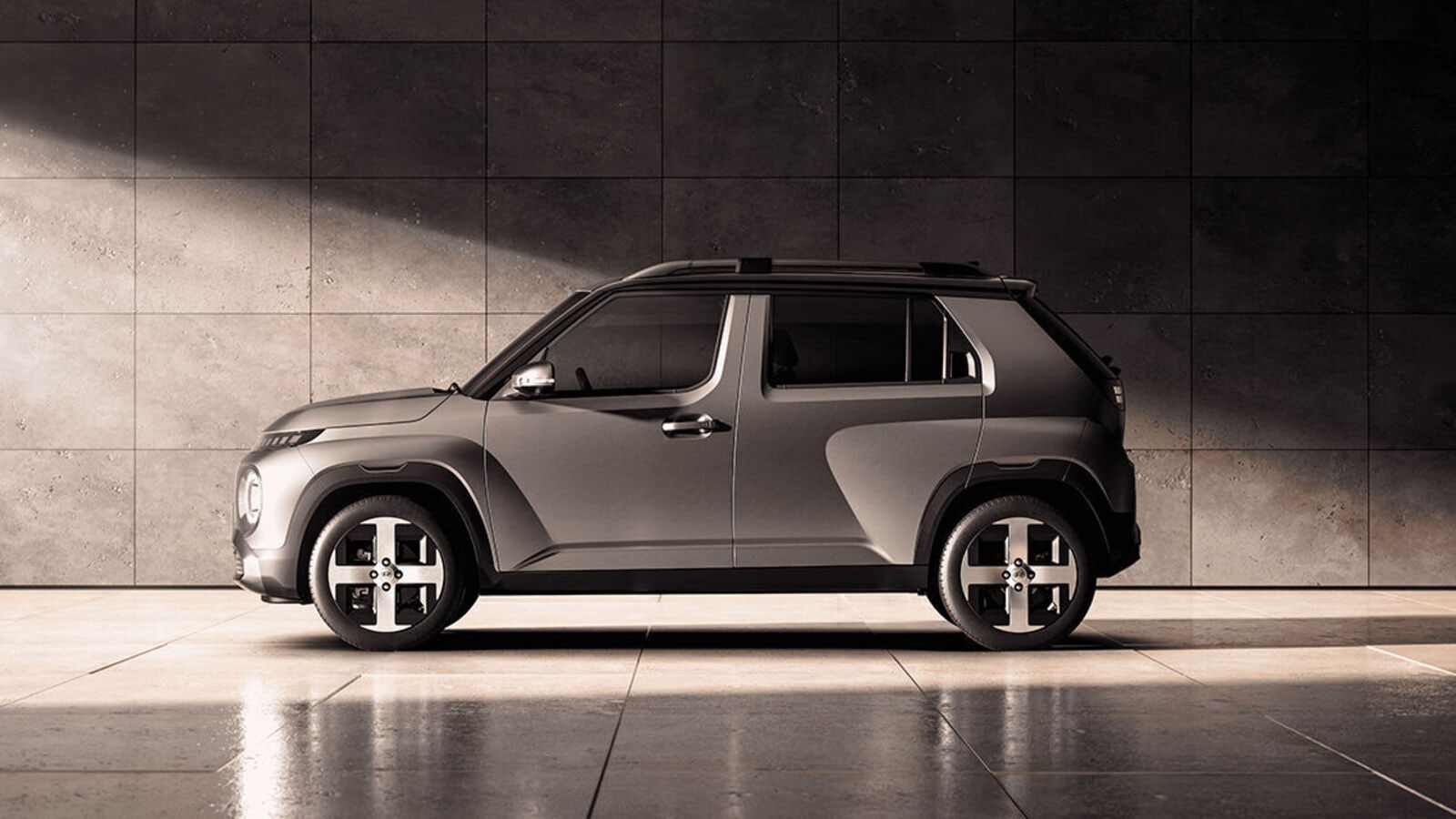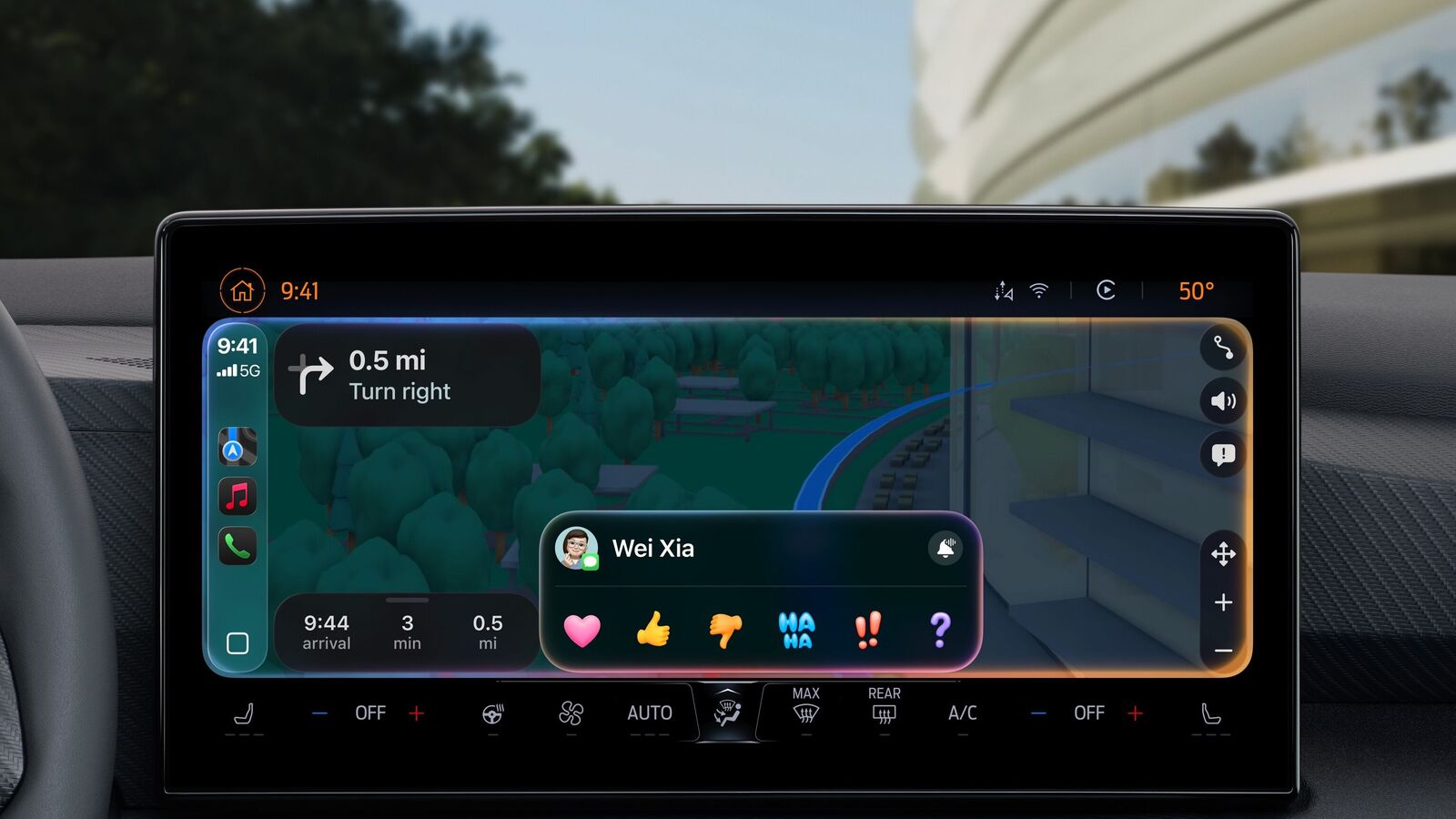18 September 2025

One of the major themes from this year’s IAA Mobility was design language. Some brands presented this through concepts, while others used production-ready models. So, how are design philosophies changing, and why now? Autovista24 journalist Tom Hooker investigates.
IAA Mobility 2025 played host to many world premieres and concept reveals, highlighting new design languages and philosophies. With the event held in Munich, German brands used the opportunity to full effect.
This included BMW’s Neue Klasse platform, Audi’s simplified design philosophy, Mercedes-Benz’s new grille element, and Volkswagen’s (VW’s) small car offensive. So, why did German manufacturers decide now was the time to change?
Adding perceived value
‘The conference is in Munich every two years, and the German brands perhaps know that their home territory is the logical place to do this,’ Car Design Research director Sam Livingstone told Autovista24.
‘My view is that the external pressures that are incurred on these brands in terms of their general commercial performance, profitability, and sales are such that internally, there would have been a lot of people being asked the question, “What can you do?”,’ he outlined.
These famous marques may seem to take very different design paths. However, their overall approaches to design are more alike than they appear.
‘I think design must deliver more. I sense that what the designers are doing for these three or four German brands is seeking to increase the perceived value. Mercedes-Benz is the one that does it the most obviously, setting out with their new but harking back to the past grille element,’ Livingstone highlighted.

‘That is going to sit on the front of the GLC and other vehicles going forward, making a much stronger statement about being a vehicle that is upper premium. I think they are all pushing hard to add perceived value,’ Livingstone said.
‘I think they are all seeking to reframe their brand specificity in a more distinct manner. Mercedes-Benz and Audi are obviously doing that, I think clearly the BMW is too, and maybe to a lesser extent VW,’ he commented.
Heritage-inspired design
Two other German brands are also using their heritage to further distinguish themselves and add perceived value as a result. Firstly, Audi brought its Concept C to Munich, a two-seater electric hardtop convertible. The prototype displays the carmaker’s new design philosophy.

‘We have worked collaboratively within the design team initially to try to understand what the values and the elements are that make an Audi an Audi. What is the DNA? That is why we looked at our heritage to move forward,’ Audi chief creative officer Massimo Frascella explained to Autovista24.
‘This was fundamental, understanding throughout the evolution of Audi what the most distinctive and unmistakably Audi identities are. We found that the Audi Type C, the Audi Type D, and the Audi A6 were the models with the verticality that were very Audi,’ he added.

The model previews a production car slated for release in 2026. while other upcoming models will be influenced by the Concept C’s design.
‘What I really like about this car is that it is unmistakably Audi; it cannot be anything else. We are so fortunate as a company to have a wonderful heritage. That is not something that all the brands have, so for us it is a huge asset,’ he said.
Designing a new generation
BMW also took inspiration from its past with its new ‘Neue Klasse’ platform. This is a deliberate reference to the brand’s transformation in the 1960s. The new BMW iX3’s design conveys this, while being a visual signal of a new generation of models. Most notably, the model has new illuminated ‘kidneys’ replacing the previous chrome design.

‘One step is not enough. We need to take two steps. Then, the design team said, if you do such a bold step in everything, we need to make it obvious to the customer that this is something new. It is a bold leap,’ BMW iX3 product manager Mark Berger told Autovista24.
Meanwhile, VW continued the legacy of its Polo and Polo GTI models at IAA Mobility, bringing them into the electric era. The brand’s attempt to keep the hatchback’s essence on a new powertrain and platform was helped by small design details.

‘In the traditional GTI, you have this golf ball shifter. Now, in the electric one, you do not have a shifter anymore. So, we bought it back in the centre cap of the wheels, now we have a golf ball pattern. You can bring it back, this GTI feeling,’ head of VW design Andreas Mindt told Autovista24.
This was combined with modern details, including ‘whisky glasses’. These made up part of the rear lights on the ID.Polo and ID.Cross concept.

‘It looks like a thick glass, not like a champagne glass that breaks immediately. It is giving you the impression that it is unbreakable. This is how a VW should look,’ he stated.
Concept cars remain important
Mindt also discussed the importance of concept cars, even if models resemble their production variant. For brands, this is an opportunity to gauge consumer opinion.
‘In this case, we are very close to production already, but you get feedback. For us, it is important, almost like a customer survey. We are going to have comments, and we really read them. I am very interested in the opinion of the people,’ said Mindt.
‘We need to have this dialogue with customers. When you present a show car, you get a feel of what is good and what is bad. Of course, you have a lot of haters. But you also have very valid, interesting opinions. We want to know and we want to learn, as maybe we bake it into the next project,’ he said.
Berger shared a similar viewpoint, as the BMW iX3’s design resembled the Vision Neue Klasse X presented earlier this year. With a new generation, the brand had the opportunity to test a striking new design.

‘Since we did not have a direct predecessor, we could go down this route, test the reaction on the design, and make people already a bit familiar with it. That is a bit of a pity now, because sometimes people say, it is not that new. The surprise is gone as the Vision car has already taken a lot of the credit,’ Berger noted.
‘We thought the step was so big, we did not have to exaggerate that much. Because the design jump was already so high from all the other BMWs, showing more or less the serious design made for a very good concept car already,’ he commented.
China’s design perspective
The increasing number of Chinese brands at IAA Mobility was noticeable. This ranged from luxury all-electric SUVs to European-focused hatchbacks. But with many announcing international expansion plans, are design philosophies also evolving?
‘I think most of the Chinese brands do not have sufficient distinction for them to be able to actually enter this new market for them, in Europe, to be able to set out that they are who they are clearly,’ commented Livingstone.

‘I suppose historically that is not so different from the Japanese and the Korean playbook, which is to come in with vehicles that are ostensibly akin to European offers and are quite generic. But they have a competitive offer of features and technical content versus price ratio,’ he pointed out.
‘So, you could argue that it is consistent with what came before. However, in terms of actually creating an individual brand and setting out its purpose in a very distinct offer, having a bland or generic design approach just will not work,’ Livingstone added.
Deeper cultural differences
However, the reason behind this apparent lack of distinguishability between Chinese brands may not just be strategic. It could also highlight a significant cultural difference between the two regions and their respective automotive markets.
‘I think there is just a cultural distinction that in the Western mindset, we consider without even thinking, how design is out there to seek to appeal to you. As a consumer, you look for a design that you want to have,’ said Livingstone.
‘I would suggest that in China, it is much more likely that a design is there to ensure that you do not create something that people do not want. It would be wrong to suggest that Chinese brands are naive, but there is also a bare truth that the market is less mature,’ he said.
‘So, I think design is there to provide a decent-looking car that is akin to other cars of this ilk and be subtly different in some respects. That is the extent of the design remit in the Chinese market,’ Livingstone continued.
‘Whereas, in the more mature Western market, there is more recognition from both a brand and customer side that there is an opportunity, an expectation, and a need to assert some greater level of brand specificity,’ he explained.
Korea’s contemporary design philosophy
So, where do brands from other regions fit into the automotive design landscape? For example, Hyundai and Kia do not necessarily conform to broader design philosophies seen in Europe and China.

‘Kia is more consistent in its offer, and Hyundai is more divergent. Overall, I do not believe they are conforming to the generic offer that we have seen from China. Nor are they like the German brands, leveraging elements of heritage to add perceived value. I think they are taking a different path,’ outlined Livingstone.
Specifically, Hyundai did take inspiration from its heritage when creating the Concept Three, a compact EV from its Ioniq sub-brand. However, unlike other brands, this vision came from outside the automotive world.

‘There are several inspirations. First, the desire to go back to designing hatchbacks, not only SUVs. But also, the inspiration of our own heritage with steel,’ head of department of exterior design at Hyundai Motor Europe, Nicola Danza, told Autovista24.
‘We produced our own steel. So, we wanted to celebrate steel by expressing it in its super simple form, and you see these three big surfaces. The bonnet, the shoulders with the doors, and the rear wrapping around the tailgate to express this metal feel,’ explained Danza.
‘We wanted to create something that is simple, pure and easy to understand. Sometimes cars are too heavy in terms of design features, and we wanted to simplify to the max,’ he added.
‘Every concept we do, especially the exterior, is a hint of what is coming next. This is the first time we have shown this design language, so it is very important for us to express it. Also, it is important not to overpromise. Sometimes you go so far away with the concept cars that I suppose you overpromise, and then the reality is different,’ he added.
Livingstone also commented on how the two Korean brands are exceedingly international in their orientation. While their domestic market is a focus point, they see Europe as a major market, alongside China, to some extent.
‘I think it would be wrong to say that it is a Korean thing, because their design leadership and designers are not Korean nationals. It is an interesting perspective compared to the two core tranches of Europe and China,’ he concluded.





